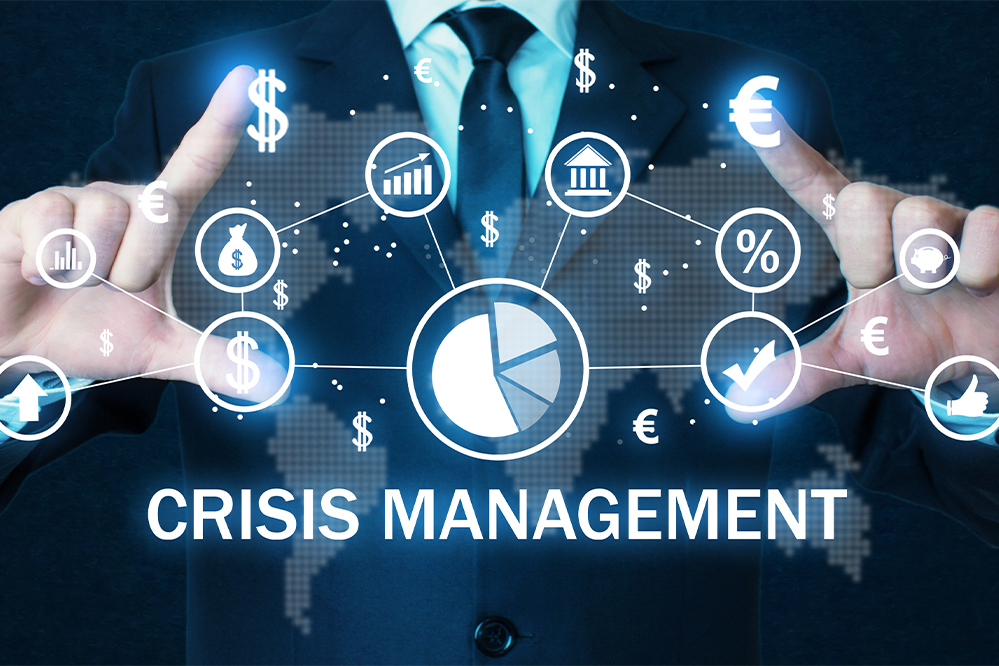How To Deal With A PR Crisis In Business

The greatest nightmares of a brand are public relations crises. Viral unfavourable remarks set off a series of expensive obstacles for companies. These may vary from large lawsuit settlements and regulatory attention to product recalls and partner relationships being strained. Although a PR crisis could be a catastrophe for the business, it does not always mean that your brand will vanish. Social media marketing and platforms are one instrument available to handle bad press.
We will go through PR crisis management in more detail in this blog and go over these salient features:
What is PR Crisis?
Public Relations crisis communication is the deliberate response to an occurrence or set of events endangering or compromising the operations and reputation of a firm using press. Customer complaints, product recalls, and scandals involving firm leaders and staff are few instances of these events.
Social media crisis communication seeks to aggressively confront broad unfavourable attention from the news, consumers, or regulatory agencies.
6 Strategies for Reacting Professionally to a PR Crisis

While the proactive strategy focusses on foreseeing bad events in the future, the reactive approach to a crisis addresses the current problem while employing online reputation management tools to investigate stakeholders’s attitudes in real time. When you are talking use user-generated content, because you will want to present your brand values and help to positively represent your business.
Following your PR crisis communication strategy, react to public flutter of negative emotions by doing these actions:
1. Honour The Issue. Instantaneously
One must react to a situation promptly. Release a statement declaring you aware of a developing situation and acting to resolve it as soon as you find out about it.
If you do not yet have the whole extent of the crisis under control, post a pre-written, concise reaction or a holding statement noting the problem. It gives you time till your staff completely understands the matter, even if it stops rumours and false information.
• Creating a holding statement, rely on your messaging bank.
• Keep it short, covering the foundations.
○ What occurred?
Where and when occurred the incident?
○ whose life was impacted? (apologise and show those inconvenienced compassion).
• Steer clear of discussing doubtful or unverified specifics as this could aggravate further uncertainty.
• Though this is undoubtedly the case, be cautious not to assign responsibility to other individuals or organisations. The public could see this as a copping out of obligation.
Pepsi’s Kendall Jenner commercial in 2017 is one of the well-known social media crisis management models illustrating the need of reacting to events quickly. The firm swiftly recognised the issue, deleted the material and apologised to anyone outraged after the tone-deaf commercial portraying the supermodel attending a demonstration and presenting a Coke to a cop drew strong reaction.
2. Prepare a Dedicated Crisis Facts Post.
The public wants you to explain what transpired more fully. Thus, try to absorb as much knowledge about the situation as you can. Make a social media PR facts sheet detailing the following:
Individuals Affected: Indicate who the crisis affects and its degree of influence.
Events Sequence: List the incidents that preceded the crisis along with the times the firm learnt about them.
Action Steps: Talk about the particular steps you have taken to solve the fundamental problem, increase consumer safety, and lessen the effect of the issue. Add activities done to stop the occurrence going forward.
Contact Information: Tell certain persons to whom stakeholders should get in touch should they have any questions.
Pin all the material you acquired on your social media profile and write a post addressing all the facts. Increase this material if needed to meet your social media objectives of reaching the desired audience and guiding the spreading influence. Respond with a link to the article to offer thorough information if a client or partner requests specific incident details.
Among the list of remarkable social media crisis management cases was Facebook’s reaction to the 2018 Cambridge Analytica data hack. Mark Zuckerberg, the creator of the social media paltform Facebook, addressed user worries by publishing a detailed article outlining the chronology of events and the actions taken to guard user information.
3. Deliver Consistent Messaging on Every Platform.
Accuracy is crucial in a crisis to help to stop further uncertainty and the dissemination of false information. Remember also that your brand may lose credibility over a terrible event; hence, the last thing you want is for people to believe you are saying one thing on Facebook and another on X (formerly Twitter). To keep your brand identity, always go to your facts sheet to understand the essence of your message and provide correct information on many social media sites.
Once the popular personal care company Dove was the hot topic on social media for misguided reasons. It had a commercial in 2017 depicting a lady of colour removing her shirt and transforming into a Caucasian. The brand admitted the issue and sent an official statement on Facebook and X channels with the same message.
4. Provide Consistent Updates on Time.
People will probably still have additional questions and views even after a social media PR facts piece is published. Immediately answer questions and respond to comments. You may also combine your replies in another article after gathering all the often asked questions so the larger audience may see your answers.
Should investigations be part of the event, report back on results. But be cautious not to guarantee dates for the end of the crisis as things change fast.
5. Stop All Designed Posts
Whether educational or commercial, planned postings have to be postponed as they might look callous amid a crisis. These pre-planned materials with varying social media marketing objectives in mind could not fit the story and tone you are employing at this delicate period. Your whole outgoing marketing should be directed towards crisis management.
6. Examining Stakeholder Opinion
Track likes, shares, and comments to acquire a general picture of public opinion of your crisis reaction. Social media listening tools can let you see ideas of others outside of your own postings. Apart from straight brand references, keep an eye on crisis-related hashtags and keywords.
Examine the attitude and decide if it is becoming better or worse. Should this be the case, change your approach to communications. People often will be direct about what they believe to be missing in your answer. Your word choice might be unclear. Your voice can seem to be assigning someone else deferential guilt. Alternatively you could not be giving timely updates.
Using HA-Technologies, handle PR Crisis Like a Professional.
Although crises will always be connected to your brand, with a competent reaction to the bad press you may change things. If you do it well, you restore the confidence of stakeholders and protect your reputation. Given the public scrutiny and outrage and the many rumours about your business, PR crisis communication is difficult considering the demand to communicate fast and precisely.
A qualified digital marketing firm such as HA-Technologies can remove these challenges on your behalf. Our staff provides online reputation restoration solutions to assist you create a strong crisis communications strategy and observe quantifiable outcomes in reaching social media marketing objectives. Our area of expertise is writing communications reflecting your brand voice and addressing issues of your audience.
We also employ advanced tools to track brand mentions and examine consumer opinions, thereby helping you to react quickly to bad comments. Get in touch right now to get more about our options.
